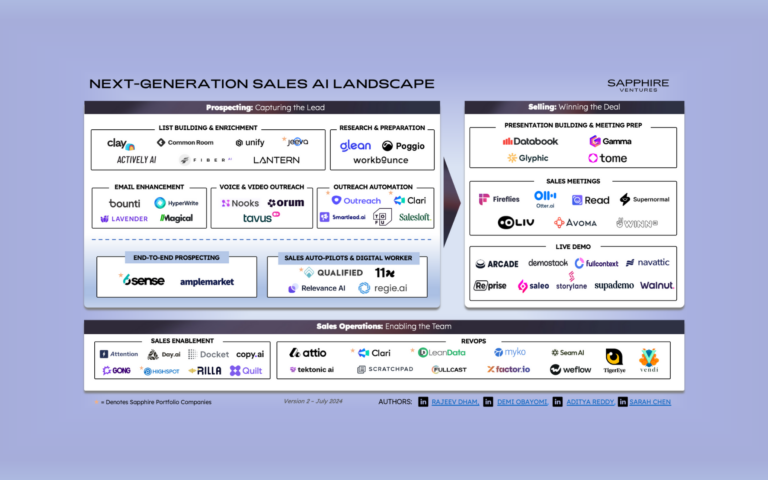For the majority of companies, COVID-19 and the resulting worldwide shelter in place orders caused a massive shift to remote work. While at first the move seemed temporary, working from home has become an indefinite reality. And while many of us are still figuring out how to balance childcare, home offices and more, some workers are enjoying the flexibility. A recent Chameleon Collective study found that 25 percent of workers surveyed anticipate shifting to permanent, 100 percent virtual work after the pandemic, up from eight percent of the respondents before the pandemic.
As remote work becomes the norm, companies are racing to adapt while also driving innovation, ensuring customer success, keeping their employees happy and moving their businesses forward. We realize how challenging this can be, especially for companies that aren’t used to being remote. Recognition, career growth and burnout are just some of the areas that can be difficult to manage in the current environment. Fast Company recently examined the topic of burnout in detail, reporting on data that found that nearly 60 percent of employees are currently feeling burned out.
Many companies are viewing remote work as somewhat of a social experiment to see if it can be done successfully. But for others, it has long been the norm. We recently spoke with leaders from two Sapphire Ventures’ portfolio companies, Auth0’s CEO, Eugenio Pace and Segment’s Chief Product Development Officer, Tido Carriero, to understand how they’ve been able to successfully drive product innovation across their global teams since long before COVID-19. Here’s what they had to share.
Innovation thrives in a remote work environment when it’s ingrained in a company’s culture
A company culture that aligns with the way employees think and work will keep them motivated no matter where they’re physically located. GitLab, a fully remote company since its inception, and one that values “permissionless innovation” proves this point and also found in its Remote Work Report that 56% of remote workers indicate everyone in their company can contribute to process, values, and company direction.

To keep employees excited about doing their jobs in a remote environment requires a special kind of culture and set of values. For example, Auth0 was founded on the belief that work is something you do and not a place you go. “Based on this belief and our team values centered around collaboration, communication and culture, we set out to create a place that people truly enjoy working at–a place where meaningful contributions happen,” Eugenio Pace, Auth0’s CEO, told us. To ensure innovation thrives across its team that’s distributed across more than 35 countries, Auth0 has seen success by following four principles:
- Trust, not chair time: Trust and a philosophy of work based on results and not on chair time are at the heart of a successful remote culture.
- Communication is your #1 tool: Communication should be frequent. Trust is built from both the bottom up and top down. Multidirectional communication is critical.
- ‘Flexibility’ frame of mind: Encourage teams to devise their own schedules so employees can complete work when feeling most productive and collaborative.
- Talent first, timezone second, location third: By enabling team members to do their best work regardless of location, companies will be able to hire a diverse mix of people from different backgrounds and skill sets–a team that is also naturally closer to your customers.
Segment takes a similar approach. The company encourages open lines of communication with its “Creating Clarity” core manager value, which is especially important for the product team. Its purpose is to ensure that all communications and processes aid in creating clarity for the team. “Creating Clarity is about making sure that every employee on my team knows how their work fits into the overall team mission, department mission and company mission,” says Tido Carriero, the company’s CPDO.
Segment has also created a culture of trust, well-being and one that encourages organic innovation. Tido shies from tools that measure innovation in terms of engineering metrics. Instead, every six weeks, he meets with engineering and product teams to discuss what they’ve spent time working on and achieved. Every other meeting, which takes place at the end of the quarter, Segment’s CEO attends. The meetings have been an effective way for Segment to make sure there’s company-wide alignment around measurement and business outcomes, while also enabling employees to focus on the work that they enjoy doing.
With offices and employees all over the world, Segment is passionate about sharing ideas and working together across roles, levels and geographies. But it can be difficult to do. “It can be hard to get different perspectives if you aren’t seeing someone or a group of people very often face-to-face, but it is achievable with the right culture,” says Tido. “It’s important to make sure that ideas aren’t all coming from HQ and that they’re not coming from a specific group like the company’s founders or executives, but rather are distributed throughout.”
When a company’s workforce is primarily or entirely distributed, innovation has to be ingrained in a company’s culture in order to build visionary products. Both Auth0 and Segment have determined that innovation is a key value early on. “Innovation does not change during times of uncertainty, it only becomes a stronger commitment,” says Eugenio. “One of our values centers around continuous improvement, experimentation and getting better one step at a time, together.”
Promote taking risks and making mistakes in the interest of innovation
While Amy Edmondson of Harvard Business School introduced the concept of Psychological Safety more than 20 years ago, Google reinforced its importance in the well-known study, Project Aristotle. In short, Google found that psychological safety was the number one determinant of high performing teams. The study was so popular that over the years, many companies began to adopt psychology safety principles and trainings.
Psychological safety means team members feel accepted and respected in their roles, and a psychologically safe team is one that’s safe for interpersonal risk-taking. The concept is especially important for technical teams developing new products, technologies, services or tools as this type of innovation requires risk-taking, requiring teams to have open and honest interpersonal communication to invent new offerings. Studies have also shown that groups tend to innovate faster when a sense of safety exists because mistakes are uncovered faster and teams are able to find better solutions to problems without fear of being wrong.
One of the most important questions companies are grappling with is how to ensure this type of environment persists for teams when they aren’t face-to-face, encouraging them to take risks and therefore innovate. Both Segment and Auth0 understand the importance of creating a safe space for employees to take risks and make mistakes as they’ve both adopted specific philosophies, traditions and strategies to ensure the learning and growth that accompany innovation are constant for their teams.

Segment’s Tido encourages risk taking amongst his technical teams at Segment by holding regular hack-a-thons called Hack Weeks. “We tend to have a very ‘bottoms-up’ philosophy around generating product ideas and making sure the best ideas win,” says Tido. “We do this by encouraging creative exploration during Hack Weeks. Normally, we hold an in-person Hack Week once a year, but this year, Segment will host two including our first ever all-virtual Hack Week. This way, engineers, project managers and designers have ample latitude to explore ideas during normal working hours.” Hack-a-thons, even virtual ones, are a great way to provide employees with an opportunity to explore creative ideas. Furthermore, when it comes to creating an environment that champions risk taking, Tido and his technical colleagues lead by example by contributing to the Segment Engineering blog, which details various product and feature journeys, including the mistakes made and encouraging others to learn from them as they build products.
Auth0 equally promotes taking risks in the interest of driving innovation. “We don’t see innovation as gigantic steps, but rather as a daily practice. Each one of us can innovate everyday, contributing to furthering the company as a whole,” says Eugenio. For Auth0, an important company value is N+1>1, which centers around continuous improvement, experimentation and getting better one step at a time, together. N+1>1 is comprised of four primary principles:
- We embrace data-driven experiments to gain insights into our business.
- If we are not making mistakes, we’re not making progress. N+1>N .
- We question the status quo constructively.
- Our personal and team growth is a result of asking for help, learning something new every day and taking action instead of standing on the sidelines.
More than ever, collaboration tools are critical to facilitating innovation
Auth0 and Segment have also adopted numerous collaboration tools to keep their teams and employees better connected and motivated in order to innovate. Auth0 has been remote since its founding, which means the team has been leveraging collaboration tools since 2013. That said, the company is constantly evolving the technologies it uses to better engage and collaborate with employees. While every team is different at Auth0, it has generally seen success with tools that promote clear communication and collaboration.
- Slack: Auth0 has a developer DNA, and Slack was one of the company’s first tools, but it continues to serve the company well in terms of project-specific channels, status updates, surveys and allowing teams to react and respond to ideas in real-time.
- Zoom: Boring conference calls rarely spark creative ideas. Auth0 has found video conferencing to be not only productive and personal, but it can inspire ‘watercooler’ conversations about environments, as well. Innovative ideas often stem from these moments and bond teams.
- Donut – Auth0 uses a Slack app called Donut that pairs employees with other employees across the company, at random and at all levels. It’s a great way to get face time with those employees that someone wouldn’t normally interact with. We’ve seen that everyone walks away with something valuable and a new Auth0 friend.
Segment is also turning to virtual conferencing and hosting watercooler chats amongst team members. It’s product team is also digitally whiteboarding by using a tool called Figma, which enables employees to post virtual Post-Its and has been a great tool for real-time collaboration with designers. On Fridays, Segment hosts a virtual hangout for the engineering, product, design and security teams. The hangouts involve Pictionary, speech and debate tournaments, puzzle hunting, trivia and other mind-moving games.
Fully remote companies and teams will emerge from this crisis
In some cases, we’ve already seen companies like Twitter and Square announce that they’ll be moving entirely to a remote workforce. While Segment isn’t quite there yet, Tido says, “My team is definitely considering more of a shift to remote work. Before COVID-19, 30% of our engineering team was working remotely. After COVID-19, I expect that more of the company will want to move remote.”
It wouldn’t surprise Tido if more than 70% of the engineering team works from home on the other side of the pandemic. Looking ahead, Tido believes, “We’ll see many more 100% remote companies. I boldly predict that half of all companies started from here on out will be 100% remote!”
Eugenio and the Auth0 team agree. Eugenio and Matias Woloski co-founded Auth0 while living in two different countries, 7,000 miles apart. The remote-friendly and globally distributed company has been able to grow to 650 employees in just a few years. Prior to the pandemic, more than 50% of its workforce worked remotely. “Looking at product development and global innovation, the movement to a remote workforce unleashes a bigger talent pool that otherwise would not be available,” says Eugenio. “By hiring for talent first and geography second, leaders will be able to put the best possible team in place to contribute to the success of their products and their company.”
When asked about what the future of remote work looks like, Eugenio says that leaders must take what they have learned during these times and reshape their workforce operations. He says, “While not all companies will stay remote, I hope the situation we are in now will help remove the stigma around remote workers. I also hope companies will see they don’t need a huge office for employees to work in every day. Instead, companies will benefit from more flexible spaces that are closer to their customers.” Auth0 thinks of its offices as embassies–places where employees can drop in and work, and also places for hosting events, and connecting with customers and the local community.
Auth0 and Segment have proven that innovation can happen anywhere, including one’s home. What matters most is having the kind of culture that promotes and encourages new ideas and creativity, as well as risk-taking and collaboration. And while the impact of COVID-19 is uncomfortable in more ways than one, the pandemic has shown to company leaders and employees alike that new products can be built and market-moving ideas can be born from a remote work environment.



